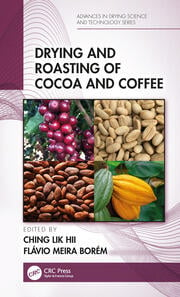ABSTRACT
In the postharvest processing of coffee, drying is the most critical factor not only for preserving quality but also for energy consumption and processing costs. Phenological characteristics of the coffee plant and their interaction with the growing environment have direct implications on fruit maturity, and therefore on diverse aspects related to harvesting. Selective manual harvesting consists of identifying and picking ripe fruit, one by one, from the coffee plant. Manual harvesting by stripping is the removal of all fruit from plagiotropic branches in a single operation. In countries or in regions with uniform maturity and flat topography, such as the Brazilian Cerrado, mechanical harvesting technology is employed. Coffee processing is a set of operations performed after harvest with the aim to remove impurities, separate less denser fruits from denser fruit and creating uniform coffee lots according to shape, size and maturity stage. Pulped natural coffee has part of the mucilage stuck to the parchment after the pulping operation and drying.


